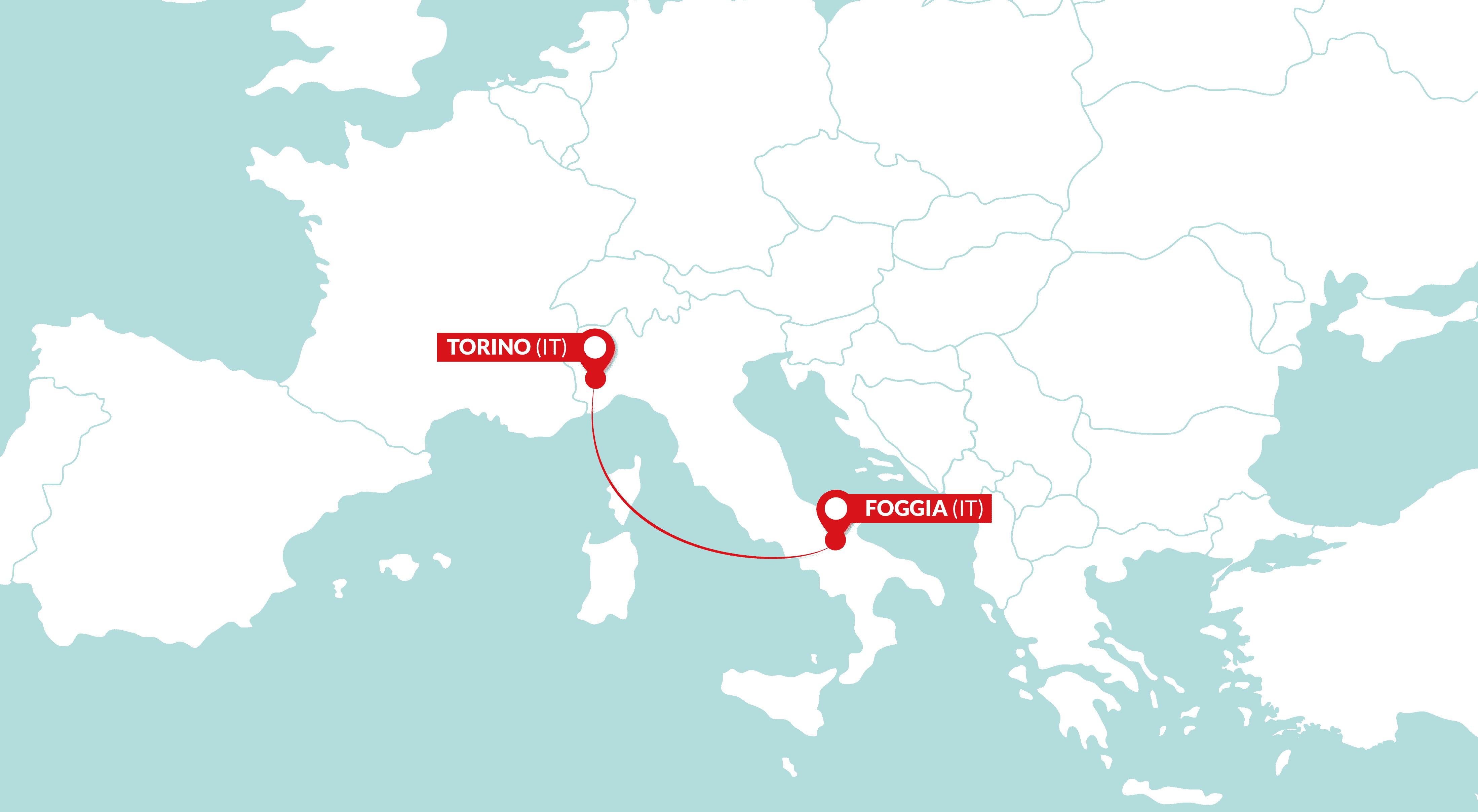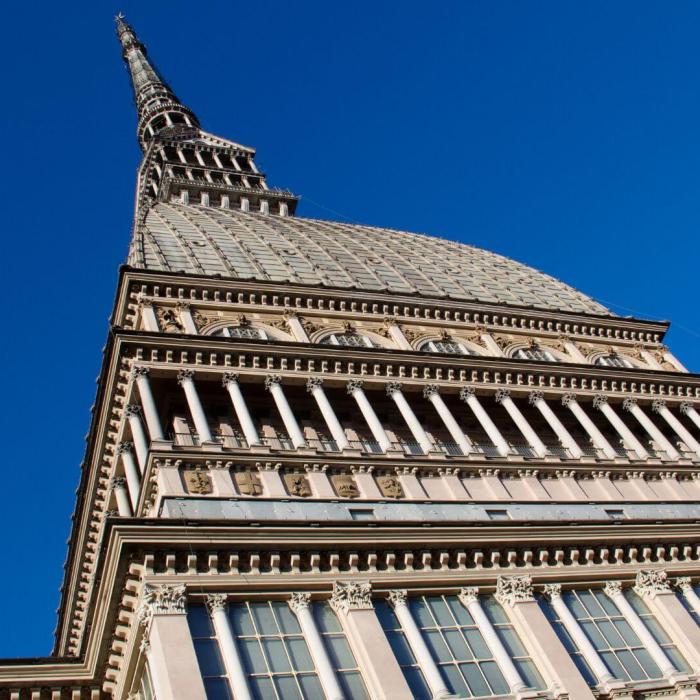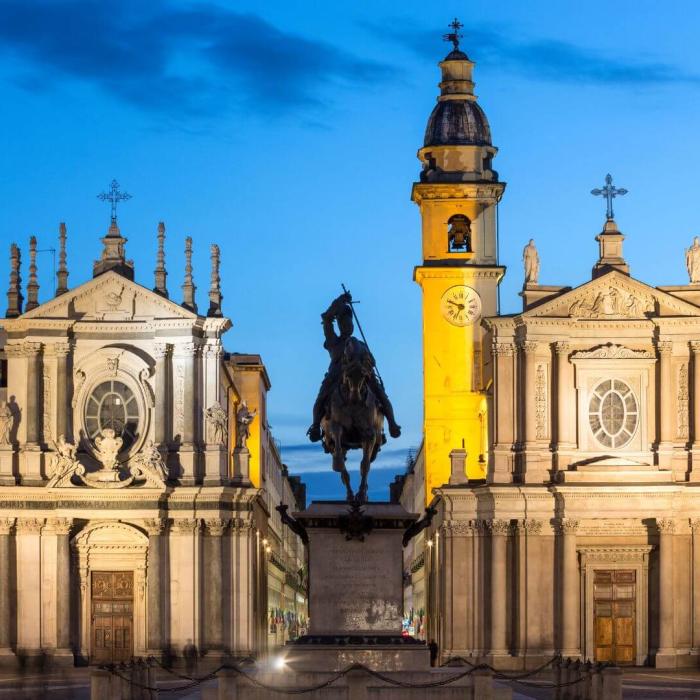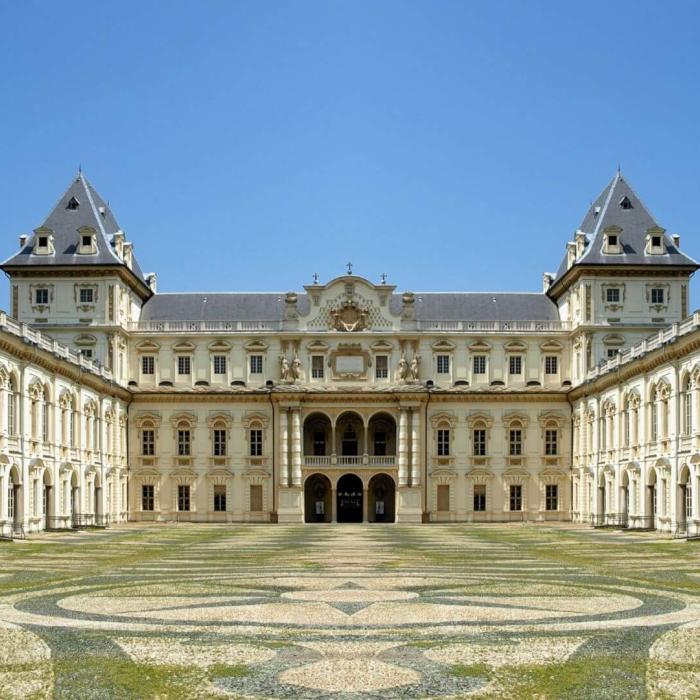Turin was the ancient capital of Savoy and today it is the Italian capital of industry. The city on the banks of the Po has a thousand faces and opportunities: visits to architectural and monumental jewels, museums, art galleries, entertainment, lots of good food, internationally renowned events such as the Salone del Libro, del Gusto and the Torino Film Festival.
The Mole Antonelliana, the Egyptian Museum, the royal residences, the Holy Shroud and the gianduiotti are just some of the treasures of the “magic city”. In addition to discovering the masterpieces of the past, you can participate in its lively cultural life made of art exhibitions and popular festivals, without forgetting the pleasure of walking through its markets or taking a break in one of the many historic cafés.


The symbolic building of the city is 167 meters high. A glass-walled elevator inside the Mole allows you to reach the “Tempietto” from which you can admire the wonderful panorama of Turin from above. The building is now home to the National Cinema Museum, the only one of its kind in Italy.

Piazza Castello is the heart of the city surrounded by elegant porticos of historic buildings. Piazza San Carlo is the “living room of Turin”, a sumptuous space with the statue of Emanuele Filiberto in the centre and overlooked by two twin churches in Baroque style. On the sides, two rows of porticos host shops, restaurants and some of Turin’s historic cafés, such as Caffè San Carlo and Caffè Torino. Palazzo Madama, on which Filippo Juvarra worked, was once a fortress and residence of Madame Reali, and is now home to the Museo Civico di Arte Antica which houses pieces from ten centuries of Italian and European artistic history. The Church of the Gran Madre di Dio could be defined as a copy of the Pantheon in Rome.

The Valentino river park, redesigned in the 19th century by the French landscape architect Barrillet- Dechamps, is a favorite place for jogging and cycling enthusiasts. The park features the splendid Valentino Castle, listed as a World Heritage Site by UNESCO, and the medieval village, a reproduction of a 15th- century village that is now a place of recreation.
Cathedral of San Giovanni and Chapel of the Holy Shroud:
The Cathedral of San Giovanni Battista, patron saint of the city, is a Renaissance cathedral whose chapel was intended to house the shroud in which the body of Jesus was wrapped in the tomb.
Museum of Egyptian Antiquities:
The museum collection is among the richest in the world, with more than 30 thousand pieces, including statues of pharaohs, sarcophagi, funerary steles, jewels and objects of everyday use.
Venaria Reale:
Thanks to a grandiose European restoration project, all the splendor has been returned to the imposing and delightful complex of the Reggia di Venaria, enriched by the Borgo and Gardens, declared a World Heritage Site by UNESCO.
Typical cuisine:
Turin's cuisine is rich in dishes and flavors, the heart of Piedmontese gastronomy. Starting with the appetizers: cold cuts, veal with tuna sauce, vegetables accompanied by breadsticks, we continue with the first courses: agnolotti seasoned with the cooking juices of the braised meat or butter and sage, and tajarin, long and thin fresh pasta, seasoned with white truffle or offal ragù. And then the second courses: meats such as boiled meat, braised meat in Barolo, cheeses such as robiola and tome, the famous bagna caôda made with oil, garlic and anchovies in which the vegetables are dipped. Followed by cocoa-based desserts such as bonèt, hazelnut and Gianduja chocolate cakes. All accompanied by great red wines: Barolo, Dolcetto, Barbera, and magnificent whites: Arneis, Moscato. And finally liqueurs and digestives: vermouth and grappa made from many grapes. The best way to enjoy Turin cuisine is to go to a “Piola”, a typical local family-run trattoria.

